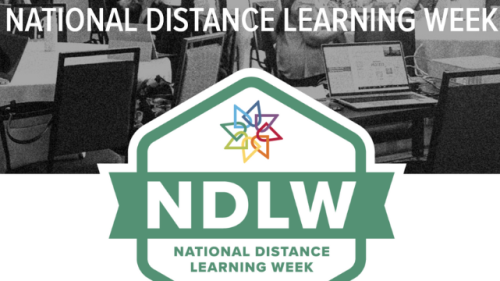You’re tech-savvy and fascinated by geography, but is there a career in that? Consider this, from the geographic information system company Esri:
According to the Esri website, “Careers in GIS are in demand more than ever. Equipped with data visualization and spatial analysis skills, GIS professionals qualify for occupations in countless fields.”1
That’s good news. Read on to explore areas where your skills are needed.
GIS and Location Intelligence
Esri ties the growing demand for GIS professionals to an increasing global reliance on location intelligence (LI), which is “achieved via visualization and analysis of geospatial data to empower understanding, insight, decision-making, and prediction.”
Many organizations rely on geographic information systems (GIS) technology to create location intelligence. By adding layers of data such as demographics, traffic, and weather to a smart map, organizations gain location intelligence as they understand why things happen where they do.
The numbers are highly encouraging. Over 90 percent of companies believe location intelligence is crucial to their success. Its uses are prevalent and widespread, “from finding optimal locations in retail site selection and solving traffic bottlenecks to maintaining and repairing vital infrastructure. Over two thirds of business executives are already using location intelligence to gain a competitive edge.” 2
Career Potential in Diverse Fields
Geographic information science puts geospatial data—information about physical objects—to practical use. It’s used to monitor the efficiency of highways and mass transit systems,3 locate unofficial refugee camps4 to provide aid,5 determine where to locate retail stores6 and track the behavior of animals worldwide.7 This wide range of applications makes GISc a fascinating and diverse field. It’s also why GISc professionals are found in virtually every industry and location.
Today’s challenges point to the importance of GISc technology and those individuals with the necessary skills to harness its potential. During the global coronavirus emergency, GISc is making important contributions in the areas of COVID-19 pandemic surveillance and data sharing, modeling and projections, investigating social vulnerabilities and response efforts.8 GISc data has also been used to track the raging wildfires on the West Coast.9 With proper training in GISc, you can be at the forefront of this exciting, rapidly expanding field.
Typical areas of employment for GIS graduates:10
- Government (federal, state and local)
- Engineering
- Utilities (electrical, telecommunications)
- Academia
- Environmental and natural resources
- Military intelligence, emergency and public safety
- Agriculture
- Transportation and navigation
- Surveying, engineering and construction
- Mining and oil
- Health and epidemiology
- Archaeology and history
GISc Careers in the Greatest Demand
The U.S. Bureau of Labor Statistics forecasts that several GISc-related careers will see greater than average growth by 2029. These include urban and regional planners at 11 percent growth,11 environmental scientists and specialists at eight percent,12 and environmental science and protection technicians, also at eight percent.13 Other top GIS careers include software developers, with 22 percent projected growth,14 and database administrators, with 10 percent growth.15 Geographic information systems technologists and technicians are expected to see a seven to 10 percent growth by 2028.16
The right GISc career choice for you depends on your strengths and preferences. If you enjoy working outdoors and collaborating with others, consider environmental science or urban and regional planning. If you’d rather have a desk job and you have a knack for analytical thinking and problem-solving, a career as a GIS analyst or software developer may be a great choice. If you like to study the earth’s geography, GIS careers that consider our natural environment may be the perfect fit. Some of the more popular GISc careers include:
- Urban and regional planners develop plans and programs for land use, and work with communities to accommodate a growing population and to revitalize cities and towns17
- Environmental scientists use in-depth knowledge of natural sciences to protect human health and the environment, working with policymakers and industry18
- Geospatial information scientists research and develop geospatial technologies, with specializations in healthcare, urban planning, retail, agriculture, mining or military intelligence19
- Geoscientists study the Earth’s structure, composition and processes to better understand the past and find solutions for present and future challenges20
GISc Salary Potential
GIS professionals enjoy rewarding careers with substantial compensation. Median salaries in 2019 included these:
- Conservation scientists and foresters: $62,41021
- Anthropologists and archeologists: $63,67022
- Environmental scientists and specialists: $71,36020
- Urban and regional planners: $74,35017
- Geospatial information scientists and technologists: $88,55023
- Geographic information systems technicians: $88,55024
- Geoscientists: $92,04025
- Remote sensing scientists and technologists: $109,91026
GIS Careers You Might Not Have Considered
As you search for GIS jobs, you’re likely to see postings for GIS analysts, GIS developers and geographic information systems specialists. While those positions offer rewarding work, the possibilities in geographic information science expand beyond them. As you pursue your degree, consider these careers:
Climate Scientist
The National Climatic Data Center uses the world’s largest climate data archive to provide climatological analysis to all sectors of the economy.1 The US Bureau of Labor statistics (BLS) sees this field growing by eight percent—much faster than the national average job growth rate—by 2029.27
Conservationist
Put your skills to work as you travel the world, using data collection and mapping technology to identify and preserve national parks for future generations.1 In this field, the BLS predicts job growth of five percent—higher than the national average—by 2029.28
Forester
Use GIS technology to improve the land’s health and productivity by managing the use and development of forests and natural resources.1 Here, as well, the BLS predicts job growth of five percent—higher than the national average—by 2029.28
Health Geographer
Advance work that’s especially vital amid the global pandemic. Health geographers deploy a powerful combination of GIS, remote sensing and GPS technologies to prevent diseases and stop them from spreading.1
Helicopter Firefighter
By using GIS to map incidents from the air, you can save lives by sharing vital information with incident commanders and cityleaders.1
App Developer
Focused on solving problems? Use coding to build interactive web maps that visually represent geographic data.1 The BLS sees huge growth here, predicting a 22 percent increase by 2029.29
Chart Your Course. Pursue Your Passion.
Develop the skill to improve global systems that sustain individuals, families and entire communities. Earn your Postbaccalaureate Certificate or Master’s degree in Geographic Information Science online at Kent State. Study with experts, master our robust curriculum, and then build the career you’ve imagined, doing the work you love.
Sources:
- Retrieved on December 2, 2020 from esri.com/en-us/what-is-gis/careers
- Retrieved on December 2, 2020 from esri.com/en-us/location-intelligence
- Retrieved on December 2, 2020 from from gps.gov/applications/roads/
- Retrieved on December 2, 2020 from from wired.com/story/aid-groups-map-refugee-camps-officially-dont-exist/
- Retrieved on December 2, 2020 from from data2.unhcr.org/en/working-group/187
- Retrieved on December 2, 2020 from gisgeography.com/huff-gravity-model/
- Retrieved on December 2, 2020 from from defenders.org/blog/2020/07/wildlife-tracking-thats-totally-out-of-world
- Retrieved on December 2, 2020 from cdc.gov/PCD/issues/2020/20_0246.htm
- Retrieved on December 2, 2020 from storymaps.esri.com/stories/usa-wildfires/
- Retrieved on December 2, 2020 from gisgeography.com/gis-degree/
- Retrieved onDecember 2, 2020 from www.bls.gov/ooh/life-physical-and-social-science/urban-and-regional-planners.htm#tab-1
- Retrieved on December 2, 2020 from www.bls.gov/ooh/life-physical-and-social-science/environmental-scientists-and-specialists.htm
- Retrieved on December 2, 2020 from www.bls.gov/ooh/life-physical-and-social-science/environmental-science-and-protection-technicians.htm
- Retrieved on December 2, 2020 from www.bls.gov/ooh/computer-and-information-technology/software-developers.htm
- Retrieved on December 2, 2020 from www.bls.gov/ooh/computer-and-information-technology/database-administrators.htm#tab-6
- Retrieved on December 2, 2020 from onetonline.org/link/summary/15-1199.05
- Retrieved on December 2, 2020 from raise.me/careers/life-physical-and-social-science/urban-and-regional-planners
- Retrieved on December 2, 2020 from www.bls.gov/ooh/life-physical-and-social-science/geoscientists.htm
- Retrieved on December 2, 2020 from www.bls.gov/ooh/life-physical-and-social-science/conservation-scientists.htm#tab-1
- Retrieved on December 2, 2020 from www.bls.gov/ooh/life-physical-and-social-science/geoscientists.htm
- Retrieved on December 2, 2020 from www.bls.gov/ooh/life-physical-and-social-science/conservation-scientists.htm#tab-1
- Retrieved on December 2, 2020 from www.bls.gov/ooh/life-physical-and-social-science/anthropologists-and-archeologists.htm#tab-1
- Retrieved on December 2, 2020 from onetonline.org/link/summary/15-1199.04
- Retrieved on December 2, 2020 from onetonline.org/link/summary/15-1199.05
- Retrieved on December 2, 2020 from www.bls.gov/ooh/life-physical-and-social-science/geoscientists.htm
- Retrieved on December 2, 2020 from onetonline.org/link/summary/19-2099.01
- Retrieved on December 2, 2020 from www.bls.gov/ooh/life-physical-and-social-science/environmental-scientists-and-specialists.htm
- Retrieved on December 2, 2020 from www.bls.gov/ooh/life-physical-and-social-science/conservation-scientists.htm






